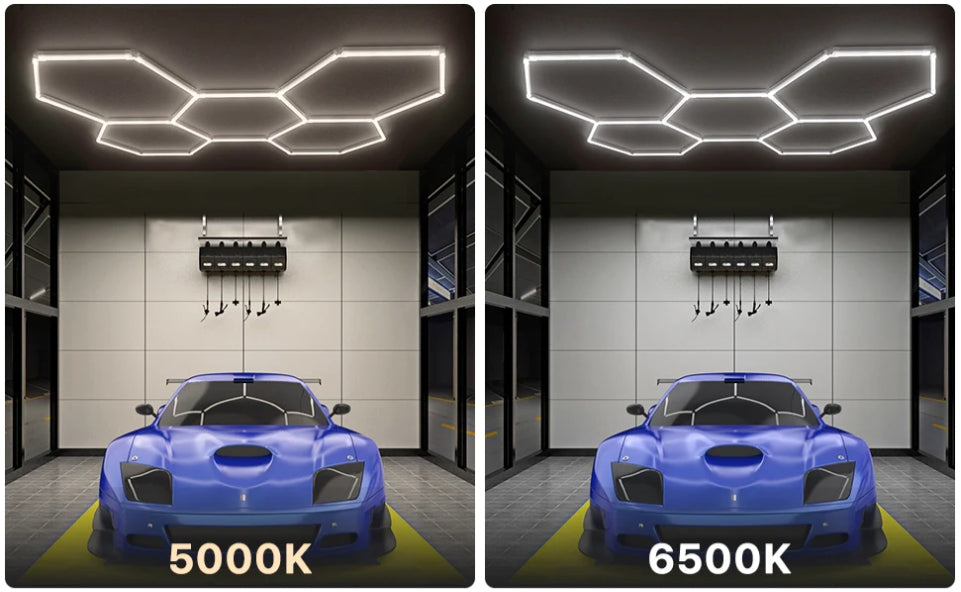2. Space preferences shape the use of light color temperatures in different settings. Residential areas favor warm lights to create a welcoming and comforting ambiance. Conversely, cooler lights are preferred in industrial and commercial settings due to their productivity-boosting effects. Cooler lights stimulate serotonin release, akin to the effects of sunlight, promoting alertness. While warmer lights encourage melatonin production, aiding in relaxation and sleep.
4000K vs 6500K
Cool lights are 4000K & 6500K. 4000K has a neutral, balanced light and is widely used in diverse facilities such as factories, parking lots, sports fields, as well as warehouse facilities. Its ability to maintain concentration and comfort which is well suited for factory settings
In contrast, 6500K shows the whitest form, bluish light which helps to see the corners or things clear in a place like a hospital or sterile environment. Detailed tasks require bright, clear lighting.
5000K vs 6500K
You will find 5000K between 4000K and 6500K on the color temperature scale. 6500K (cooler spectrum) is brighter, has a more defined blue tint with more glaring reflection compared to 5000K.
5000K is the colour temperature of daylight, while 6500K is closer to staring directly at the blue sky. It is often used in areas that require high brightness and clarity, like hospitals and clean environments.
In spaces such as retail shops, offices, parking garages, etc., brightness is again an important concern, but the intensity of 6500K is excessive and not ideal, so frequently, you will find lights at 5000K are most desired

Final Thoughts: Your Space and Its Temperature Needs
Selecting the right color temperature is a crucial part of function and mood. Thanks for your attention please also keep your space requirements and Properties. This guide can help you select lighting that will brighten and enhance the functionality and aesthetics of your space.
Different environment requires different color temperature of lighting. 4000K lighting is suitable for areas that require prolonged focus for work, like factories and parking lots. 6500K- Models with such light are recommended for the hospital, laboratories where a clear view is required. On the other hand, 5000K provides a crisp and bright light suited for offices and retail environments, where an optimal working environment is required.
